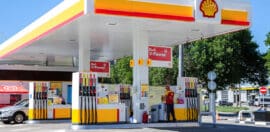Australia must recalibrate $20 trillion in future economic investment to achieve low-emissions future

28 July 2022 at 2:08 pm
NAB chair says the scale of action needed to transition to a greener future is “far broader than the Industrial Revolution and the timeline is roughly half”.
Australia must spend $70 billion on structural changes and $420 billion in new investment over the next 30 years to position its economy for growth in a low emissions world, according to new research from Deloitte Access Economics.
This can be achieved by assessing the projected $20 trillion in economic investment in the Australian economy in the years to 2050 and recalibrating it so the economy can excel in a low-emissions world.
Commissioned by NAB, the report entitled All Systems Go, found $20 trillion will be invested in the economy in the next 28 years, whether or not we transition to net zero, but NAB chair Philip Chronican said transforming into a low emissions economy is both inevitable and complex.
“If we get it right, the opportunities are immense,” he said, but he also warned that “the scale of action needed is far broader than the Industrial Revolution and the timeline is roughly half”.
In releasing the report, NAB also revealed it has created the new role of Climate Change Officer, reflecting “increasing requirements of all parts of the economy, and all parts of the bank, to support its customers in making the transition to a low emissions future”.
Calling the shift to a low-emissions future the “great reallocation”, Chronican argued that we need to change where we invest and what will drive economic growth.
The report identifies four economic systems that together account for 90 per cent of Australia’s emissions and must lower this rate, namely energy, mobility, raw material manufacturing, and food and land use.
“The research also makes it clear that climate action is everyone’s job – the targets will not be achieved by one industry alone,” Chronican said.
“The adjustments required to realise the opportunities will impact every business and every household. We will all need to make changes.”
Of the $20 trillion in economic investment, $4 trillion represents net capital flows and investments across these four areas, in addition to $420 billion in additional new investment out to 2050.
“$70 billion must move from emissions intensive activity by 2030 into low emissions activity to make the structural changes necessary and avoid driving up the cost of the transition over the long run,” he said.
The research builds on research undertaken for the Business Council of Australia last year, which found that if coordinated and early action is taken, the economy stands to gain around $890 billion over 50 years
Ross McEwan, CEO of NAB said there is “clear commercial opportunity for Australian businesses.”
“Our role is to support our customers and communities through the transition and fund the investments needed to create a strong and sustainable future for Australia,” he said.







